The global tea concentrate market ecosystem size for tea concentrate was valued at US$ 3,280.3 Mn in 2018 and is expected to expand at a CAGR of 4.9% during the forecast period. Tea concentrate is a type of ready-to-drink beverage manufactured by extracting tea leaf and blending them with different spices such as ginger, cinnamon sticks, spice berries, cloves, black peppercorns, etc. The preference for Tea concentrates is there both among residentials and in the food & beverage industry. But when compared, the demand for tea concentrates is higher in the food industry. Tea concentrate is diluted in a hot and cold liquid such as milk, water, etc.
With the rise in demand for tea concentrates, the number of flavors offered is also rising. Tea concentrates come in different flavors such as ginger, cinnamon, and berries, etc. In the food industry, maximum food joints offer tea as a beverage along with other beverages. It is the most demanded product in the food industry as a complement product with food. In the residential industry, morning and evening tea is a necessary item to start the day. Tea concentrates also come under the category of healthy beverages in the health industry. Herbal and green tea are the rising markets in tea concentrates. The addition of green tea to a daily routine is beneficial for health and the skin. The Asia Pacific has recorded the largest tea consumption around the globe.
The outbreak of COVID-19 has bought along with a global recession, which has impacted several industries. Along with this impact, COVID Pandemic has also generated a few new business opportunities for the Tea Concentrate market. The overall competitive landscape and market dynamics of Tea Concentrate have been disrupted due to this pandemic. All these disruptions and impacts have been analyzed quantifiably in this report, which is backed by market trends, events, and revenue shift analysis. COVID impact analysis also covers strategic adjustments for Tier 1, 2, and 3 players of Tea Concentrate Market.
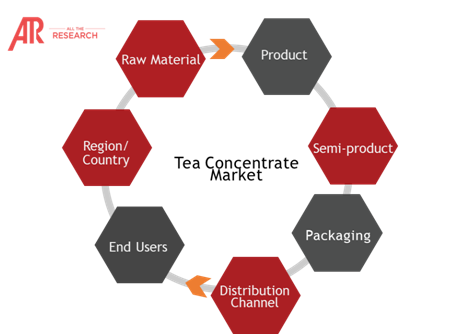
Based on packaging, the tea concentrate market ecosystem is segmented into bulk packaging and retail packaging. Retail packaging is further classified into rigid packaging, flexible packaging, paper packaging, and others. The retail packaging segment dominated the market in 2018 and is expected to witness similar trends during the forecast period.
The increasing importance of flexible packaging, owing to its cost-effectiveness and the ability to change shape, will propel the demand for retail packaging during the forecast period. However, the Food and Drug Administration’s requirements regarding retail packaging are expected to hinder the growth of the market in the coming years.
Further, the bulk packaging segment is to grow at the fastest pace with a CAGR of 3.9% during the forecast period. The benefits associated with bulk packagings such as shipping cost-effectiveness and recyclable packaging are expected to drive the growth of the segment in near future.
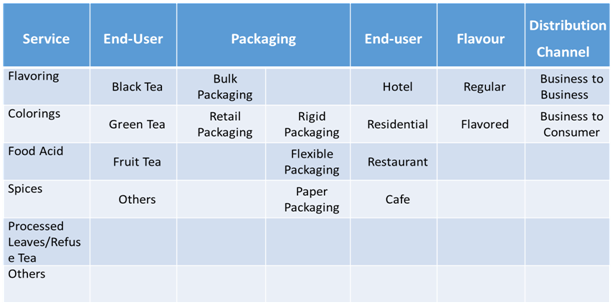
The average selling price of tea concentrates in North America was US$ 37.5 in 2018 and is expected to increase favorably in the coming years as well. The economic outlook of the US is considered healthy, as the GDP of the country is well within 2% to 3%, which is considered ideal. Further, the inflation and deflation rates in the country are also balanced. In other words, the economy of the country is considered as a Goldilocks Economy.
However, the economic growth in the U.S. is expected to witness a slowdown in near future, owing to the ongoing trade war between the U.S. and China, which would result in increased tariffs on Chinese imports and at the same time, would also attract increased tariffs on U.S. exports. It is expected that consumer spending in the country is likely to remain stable, as a result of which, growing prices of tea concentrates would not have much effect on consumers.
The Canadian economy was majorly driven by high consumption rates. Consumer spending witnessed a minor decline during the first quarter of 2019 but is expected to pick up pace in the first quarter of 2020. Growth in the housing sector would attract a greater GDP growth rate, which would also revive the economy. Prices of FMCG products are expected to witness a steady increase in the coming years, and the outlook of consumer spending seems favorable as well.
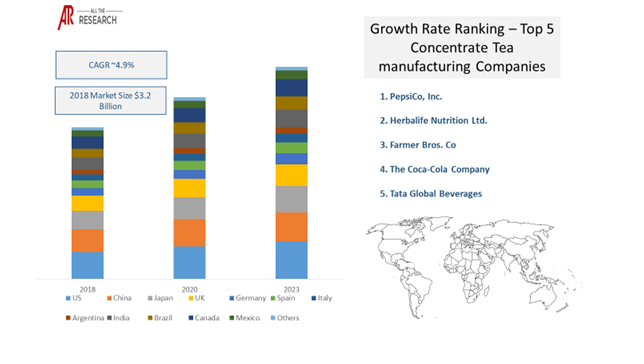
There are many trends that are having an impact on the tea concentrate market forecast. These, when evaluated from a company’s perspective, can drive growth. Our numerous consulting projects have generated sizeable synergies across all regions and all sizes of companies.
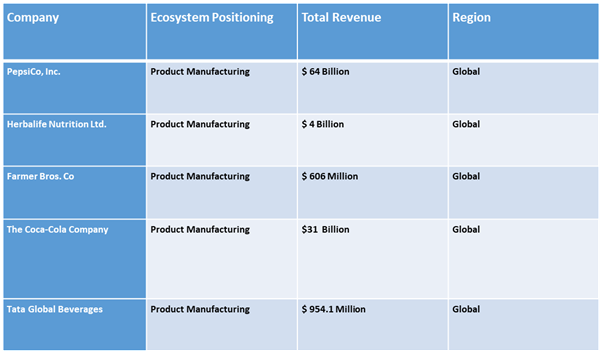
Very few markets have interconnectivity with other markets like Tea Concentrates. Our Interconnectivity module focuses on the key nodes of heterogeneous markets in detail. Spices, Food coloring, Green tea, Black tea are some of our key researched markets.
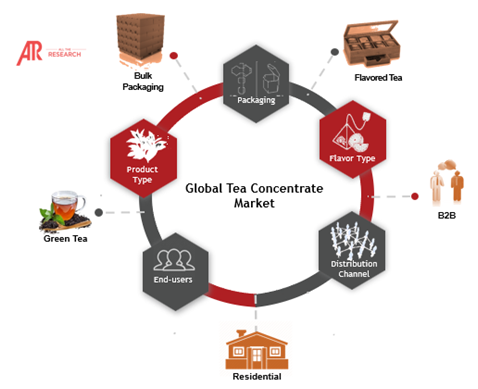
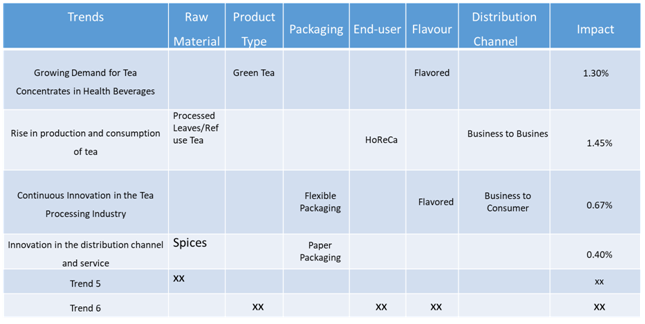

Ask for free product review call with the author

Share your specific research requirements for a customized report

Request for due diligence and consumer centric studies

Request for study updates, segment specific and country level reports
